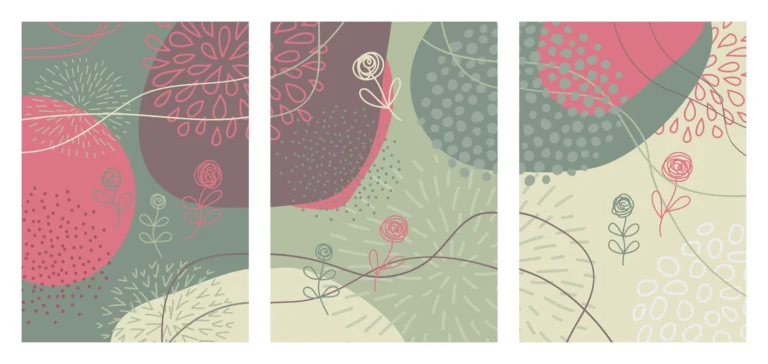Are we sacrificing the environment for artistic expression with Printed Acrylic? Printed acrylic has gained popularity for its vibrant visual impact on industries. Many artists, designers, and businesses like it because it’s versatile, strong, and colorful. But, when discussing using Acrylic Prints, we must understand its environmental effects.
There are speculations about whether printed acrylic is environmentally friendly or harmful. Acrylic paint contains plastic as a primary component, which is why it is durable.
We will discuss the environmental effects of printing on acrylic, the benefits of using eco-friendly alternatives, and strategies for minimizing environmental effects.
Read the blog for valuable insights and comprehension.
Overview of Acrylic as a material
Acrylic, a durable, versatile synthetic polymer, is used in signage, displays, and artwork. However, producing acrylic involves using fossil fuels and chemicals, which can have environmental effects that make acrylic less eco-friendly.

Environment Effects of Print on Acrylic
Consider the potential environmental effects of acrylic printing, focusing on key aspects like waste, pollution, and water pollution.
Volatile organic compounds (VOCs) released.
Using certain inks and solvents in acrylic printing can result in the emission of VOCs. These compounds can contribute to air pollution and harm air quality. Employing low-VOC or VOC-free inks and implementing proper ventilation systems can help minimise the release of harmful pollutants.
Water Pollution
During printing, ink runoff and improper disposal can lead to water pollution. It is crucial to adopt responsible printing practices, such as capturing and treating waste water, to prevent the contamination of water sources and ecosystems.
Use of inks and dyes
Printing process inks and dyes contain harmful chemicals; choose eco-friendly alternatives like water-based or soy-based inks for environmental protection.
Energy consumption
The printing process consumes energy, mainly electricity, impacting carbon emissions and acrylic printing’s carbon footprint. Implementing energy-efficient practices reduces the environmental impact.
Non-Biodegradability of Acrylic
Acrylic is a durable material that can withstand time without decomposing. This characteristic poses challenges in terms of waste management. It requires proper waste management for recycling and reducing environmental effects. It makes acrylic eco-friendly.
Waste generation and disposal
The printing process generates waste, requiring proper management to minimize environmental effects. Recycling and reusing acrylic waste reduces landfill waste while exploring alternative disposal methods promotes sustainability.
Is Acrylic Paint Eco-Friendly?
Acrylic paint, made from plastic or acrylic polymer particles, has many environmental effects due to its plastic nature. However, microplastics pose risks to ecosystems and the food chain.
Proper disposal and waste management practices are crucial for minimizing the environmental impact of acrylic paint. Adopting sustainable practices can make acrylic painting more sustainable and less harmful.
Eco-friendly acrylic paint alternatives
There is no eco-friendly paint that is the same as acrylic paint. Most art is not good for the environment. Most eco-friendly solutions don’t last long. Due to their lower plastic content, eco-friendly alternatives to acrylic paint included
- Egg tempera,
- Watercolors,
- Regular tempera,
- Poster colors
Watercolors are water-soluble and have minimal waste, but they require responsibly sourced watercolor paper to minimize environmental impact.
Egg tempera, an ancient paint medium, is composed. This product consists of natural things and can be put on wood panels or paper. However, caution must be exercised when working with natural pigment powders, as improper disposal can lead to harmful substances entering waterways and impacting the environment. Artists can make conscious choices by selecting paints with reduced plastic content, using sustainable surfaces, and responsibly managing waste to minimize environmental effects.
Strategies for Minimizing Environmental Effects
Incorporating eco-friendly strategies into acrylic printing minimizes environmental effects and contributes to a greener, more sustainable process.
Eco-friendly inks and dyes
Choose eco-friendly inks and dyes like water- or vegetable-based, free from harmful chemicals and low VOCs. These alternatives minimize air pollution and promote safer working conditions for printers.
Vegetable-based inks are renewable and contain fewer harmful chemicals, producing vibrant colors and excellent print quality.
Use sustainable printing materials
Sustainable materials like recycled paper, bamboo, and hemp reduce deforestation, conserve water, and lower carbon footprints while maintaining high print quality.
The Eco-Friendly Use of Acrylic Sheets
Encouraging recycled or recyclable materials in eco-friendly acrylic sheets and substrates can contribute to a circular economy and reduce virgin material demand. Proper waste disposal and recycling of acrylic waste enhance sustainability efforts.
Eco-friendly alternatives like recycled acrylic or bio-based materials are emerging, reducing reliance on non-renewable materials and minimizing environmental harm.
Reduced Carbon Emissions and Energy Efficiency
Eco-friendly printing practices reduce carbon emissions and energy consumption by using energy-efficient technologies like digital printing, requiring less power and minimizing carbon footprint. It preserves the environment and reduces business operating costs.
Recycling and proper disposal
Implement sustainable waste management strategies for acrylic waste, including recycling and reuse, to promote circularity and reduce landfill waste.
This eco-conscious approach minimizes harmful chemicals, reduces energy consumption, and contributes to a greener future in the printing industry.
Promoting Sustainability in Acrylic Printing
Regarding acrylic printing, promoting sustainability is crucial for minimizing the environmental effects and fostering a more eco-friendly approach. By educating readers about the importance of environmental friendliness in the printing industry, we can raise awareness and encourage responsible choices and practices.
Collaborating with eco-friendly suppliers and manufacturers
One way to promote sustainability in acrylic printing is by collaborating with eco-friendly suppliers and manufacturers.
By partnering with Artplus, a leading interior design company in Dubai that prioritizes sustainable materials such as recycled or recyclable acrylic sheets, we can ensure that our printing processes align with environmental standards.
Inspiring Sustainable Artistic and Design Approaches
We inspire artists and designers to prioritize sustainability by adopting eco-friendly practices like minimalist designs, optimizing material usage, and exploring alternative printing techniques. Showcase environmentally friendly acrylic designs and inspire others to do the same.
Frequently Asked Questions
Acrylic has environmental considerations, but adopting eco-friendly alternatives and sustainable practices can mitigate its impact.
Acrylic plastic offers several sustainable attributes such as reusability, shatter resistance, and lower energy consumption during production than glass. However, its recycling process can be more challenging than other plastic materials.
Eco-acrylic is an environmentally friendly acrylic material using recycled or renewable components, reducing energy consumption, utilising sustainable resources, and promoting recycling and waste management practices.
Conclusion
In conclusion, the environmental effects of acrylic printing are a complex issue that requires careful consideration. While acrylic offers various advantages, such as durability and versatility, it is important to acknowledge its potential negative environmental effects.
We can reduce these environmental effects through conscious choices and sustainable practices. We can make a positive difference in the acrylic printing industry. Promoting responsible printing practices, encouraging recycled or recyclable materials, and advocating for minimalist design choices and waste reduction.
Artists, designers, and consumers should prioritize eco-friendly choices, adopting sustainable technologies like water-based inks and energy-efficient printing.
Collaboration with eco-friendly suppliers and manufacturers and inspiring artistic approaches that prioritize sustainability can further enhance our efforts. Artplus, a renowned provider of printing services in Dubai, offers a range of eco-friendly options that align with these principles.
Ultimately, the goal is to balance creativity and sustainability in acrylic printing. We offer expert guidance and artistic solutions.
Together, we can create art that captivates and cares for our planet!




